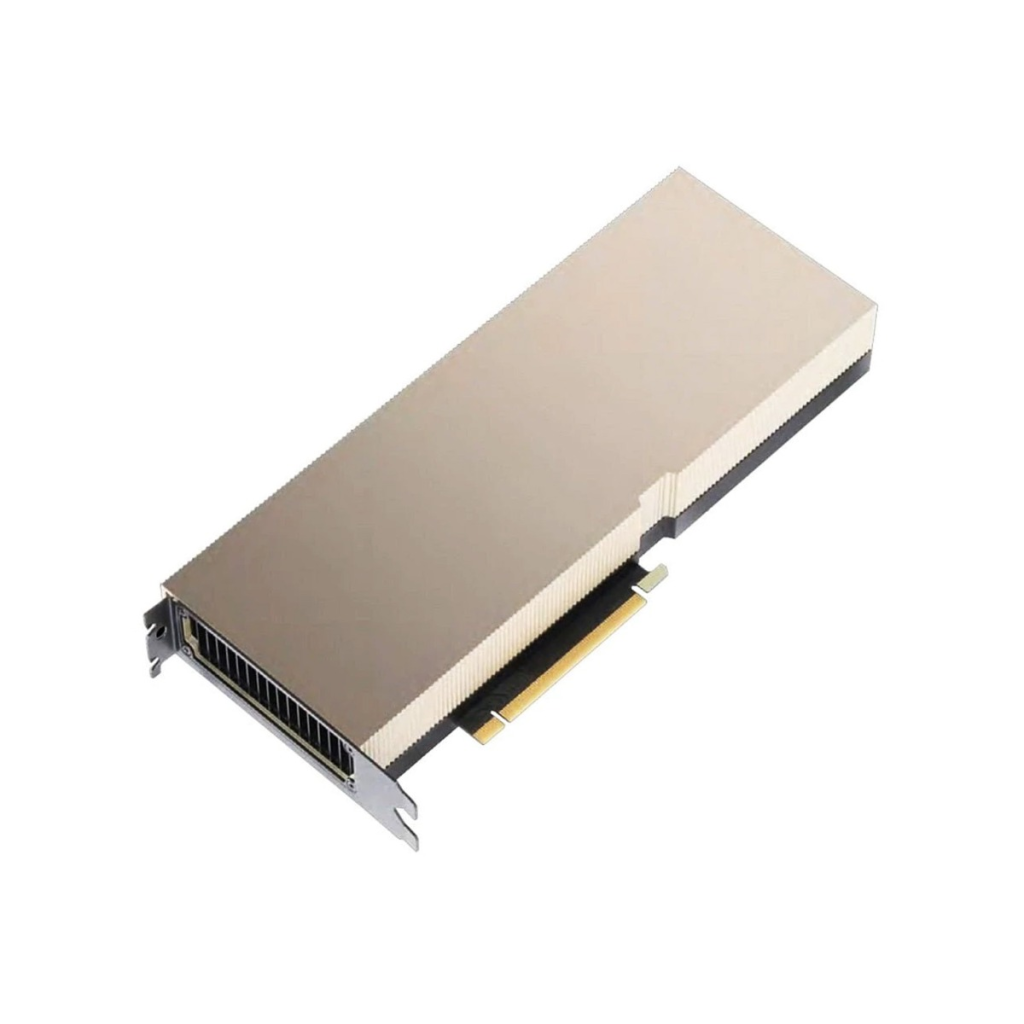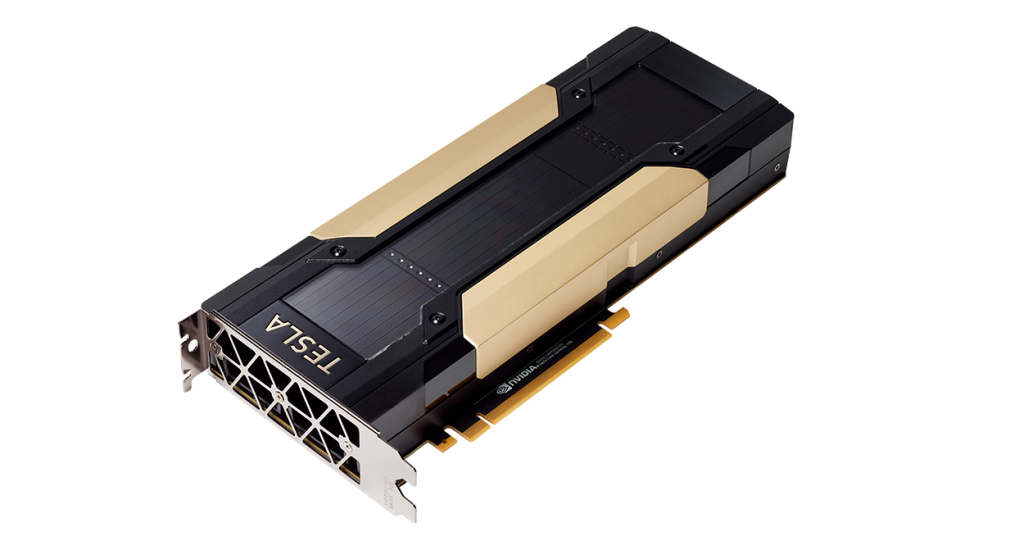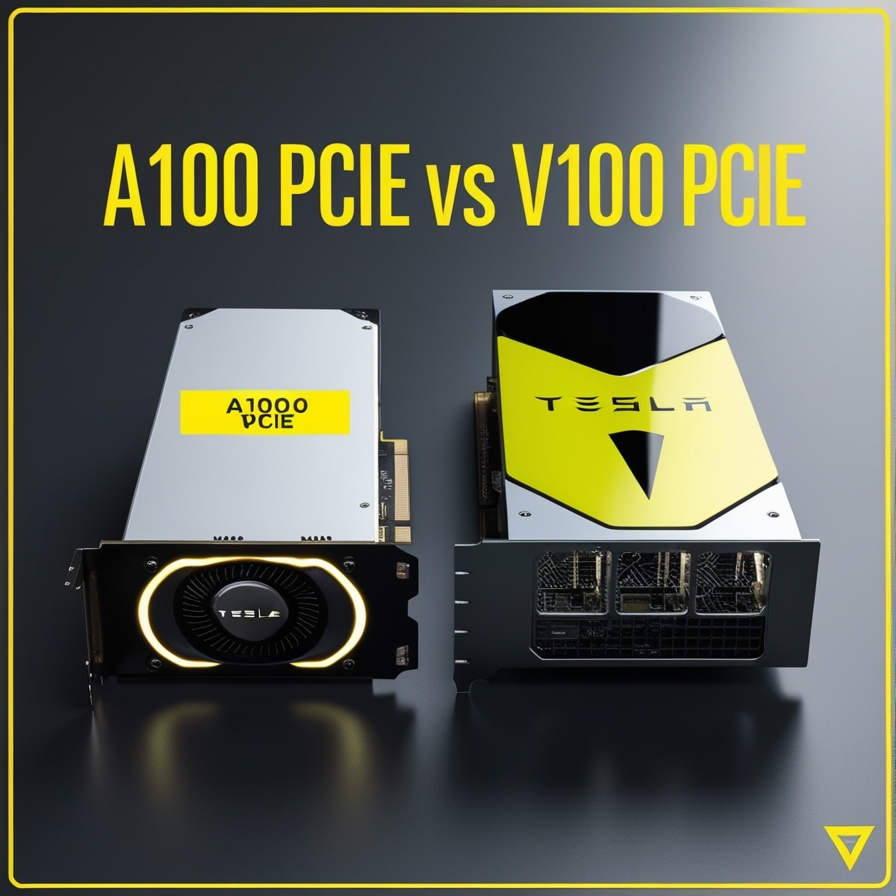In the ever-evolving landscape of AI and machine learning, the GPU you select can be a game-changer. It’s not just about raw power; it’s about finding the right balance of performance, efficiency, and scalability to meet the demands of your specific projects. NVIDIA, a leader in the GPU industry, offers two powerful contenders for AI workloads: the A100 80GB PCIe and the Tesla V100-PCIE-32GB. Both are engineered to excel in professional AI applications, but each brings something unique to the table.
This blog delves into the intricacies of these two GPUs, comparing their architecture, performance, memory, and more to help you decide which one suits your AI ambitions.
Architecture Unveiled: Ampere vs. Volta
The Cutting-Edge Ampere Architecture (A100 80GB PCIe)

NVIDIA’s A100 80GB PCIe is built on the innovative Ampere architecture, a leap forward in AI processing power. At its core, Ampere introduces the third-generation Tensor Cores, which deliver a massive boost in AI performance, up to 20 times that of its predecessor. The A100 also features Multi-Instance GPU (MIG) technology, allowing a single GPU to be partitioned into multiple instances, optimizing resource allocation across different workloads.
Key Specifications:
- Architecture: Ampere
- GPU Memory: 80 GB HBM2e
- Memory Bandwidth: 2,039 GB/s
- CUDA Cores: 6,912
- Tensor Cores: 432 (Third-generation)
- FP16 Performance: 312 TFLOPS
- FP32 Performance: 19.5 TFLOPS
- FP64 Performance: 9.7 TFLOPS
- Tensor Performance: 1,248 TFLOPS
The Proven Volta Architecture (Tesla V100-PCIE-32GB)

On the other hand, the Tesla V100-PCIE-32GB is powered by the Volta architecture, which was groundbreaking at its time of release. Volta introduced the first generation of Tensor Cores, specifically designed to accelerate AI workloads. Even though it’s older, the V100 remains a reliable choice for data centers that prioritize stability and efficiency.
Key Specifications:
- Architecture: Volta
- GPU Memory: 32 GB HBM2
- Memory Bandwidth: 900 GB/s
- CUDA Cores: 5,120
- Tensor Cores: 640 (First-generation)
- FP16 Performance: 125 TFLOPS
- FP32 Performance: 15.7 TFLOPS
- FP64 Performance: 7.8 TFLOPS
- Tensor Performance: 125 TFLOPS
Memory and Bandwidth: Handling Big Data
Expansive Memory with A100 80GB PCIe
The A100 80GB PCIe is designed to handle the most demanding AI and ML tasks, thanks to its substantial 80GB of HBM2e memory and an impressive memory bandwidth of 2,039 GB/s. This capacity allows it to process larger datasets and more complex models efficiently, making it ideal for cutting-edge research and enterprise-level AI applications.
High Bandwidth with Tesla V100-PCIE-32GB
While the Tesla V100-PCIE-32GB has a smaller memory capacity at 32GB, it’s still quite capable for many AI workloads. With a memory bandwidth of 900 GB/s, it can handle data-intensive tasks effectively, although it may not be as future-proof as the A100 when dealing with the largest datasets.
Performance Benchmarks: Numbers That Matter
Floating-Point Performance: A Deep Dive
When it comes to floating-point performance, the A100 takes the lead, offering 312 TFLOPS in FP16, 19.5 TFLOPS in FP32, and 9.7 TFLOPS in FP64. This is crucial for AI and ML tasks that require heavy computational resources. The V100, while still strong, delivers lower numbers, with 125 TFLOPS in FP16, 15.7 TFLOPS in FP32, and 7.8 TFLOPS in FP64.
Tensor Core Performance: AI Acceleration
The A100’s Tensor Cores are capable of delivering up to 1,248 TFLOPS, making it exceptionally powerful for AI-specific workloads such as deep learning and neural network training. In contrast, the V100 offers about 125 TFLOPS, which, while still substantial, doesn’t match the A100’s AI processing capabilities.
Energy Efficiency: Powering Through AI with Less
Power Consumption and Efficiency
Despite its high performance, the A100 80GB PCIe remains relatively energy-efficient, consuming around 250-300 watts under typical AI workloads. The Tesla V100-PCIE-32GB is slightly more energy-efficient, consuming about 250 watts, making it a good choice for environments where power efficiency is a priority.
Scalability: Growing with Your Needs
A100 80GB PCIe: Scalability in Multi-GPU Configurations
The A100 is built with scalability in mind. Its ability to support multi-GPU configurations and MIG technology makes it a versatile option for large-scale AI projects. This scalability allows organizations to optimize their hardware resources efficiently, making the A100 an excellent choice for expanding AI workloads.
Tesla V100-PCIE-32GB: Reliable in Distributed Systems
While the V100 also scales well in distributed systems, it lacks the advanced scalability features of the A100. It’s still a strong contender in data centers but may not offer the same level of flexibility and resource optimization as the A100.
Software Ecosystem: The Heart of AI Development
Both GPUs are fully compatible with NVIDIA’s CUDA platform, cuDNN libraries, and popular AI frameworks like TensorFlow and PyTorch. However, the A100 benefits from the latest advancements and optimizations, ensuring faster processing times and better performance in AI and deep learning tasks.
Longevity and Future-Proofing: An Investment in AI
The A100, with its advanced architecture and superior performance, is designed to be a future-proof investment for organizations looking to stay ahead in AI. While the V100 is still relevant, especially in research and smaller-scale applications, it may not keep up with the growing complexity of AI workloads in the future.
Pricing and Availability: What to Consider
The A100 80GB PCIe is priced at a premium, reflecting its cutting-edge capabilities. It’s a significant investment but one that can pay off in terms of performance and scalability. The Tesla V100-PCIE-32GB, while more affordable, offers a lower performance-to-cost ratio, making it a viable option for those with budget constraints.
Conclusion: Making the Right Choice
Choosing between the NVIDIA A100 80GB PCIe and the Tesla V100-PCIE-32GB ultimately depends on your specific needs and budget. The A100 is the clear choice for those requiring the highest levels of AI performance and scalability, while the V100 remains a strong contender for more cost-conscious projects that don’t demand the latest in AI processing power.
Both GPUs have their strengths, and understanding these can help you make an informed decision that aligns with your AI ambitions. Whether you’re looking to push the boundaries of AI research or need reliable performance for data center operations, NVIDIA’s A100 and V100 have you covered.

Leave a Reply
You must be logged in to post a comment.